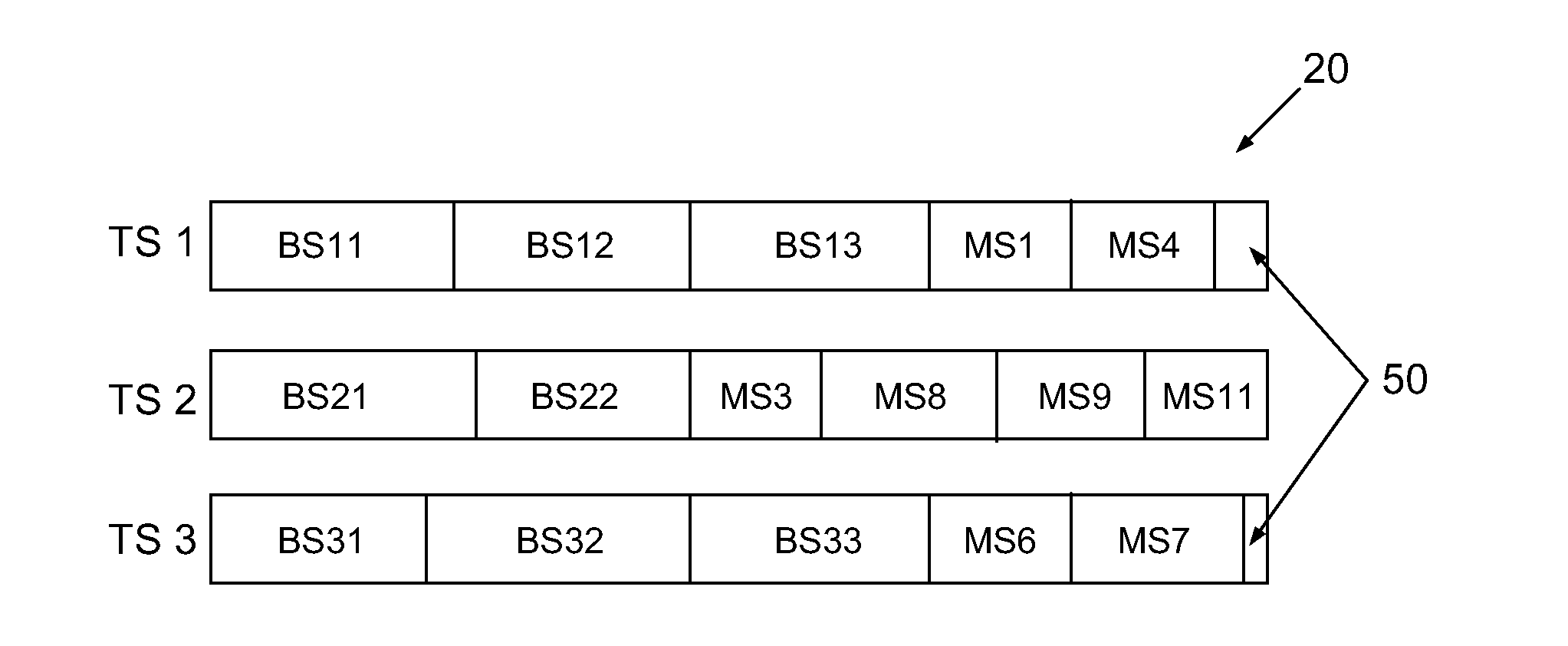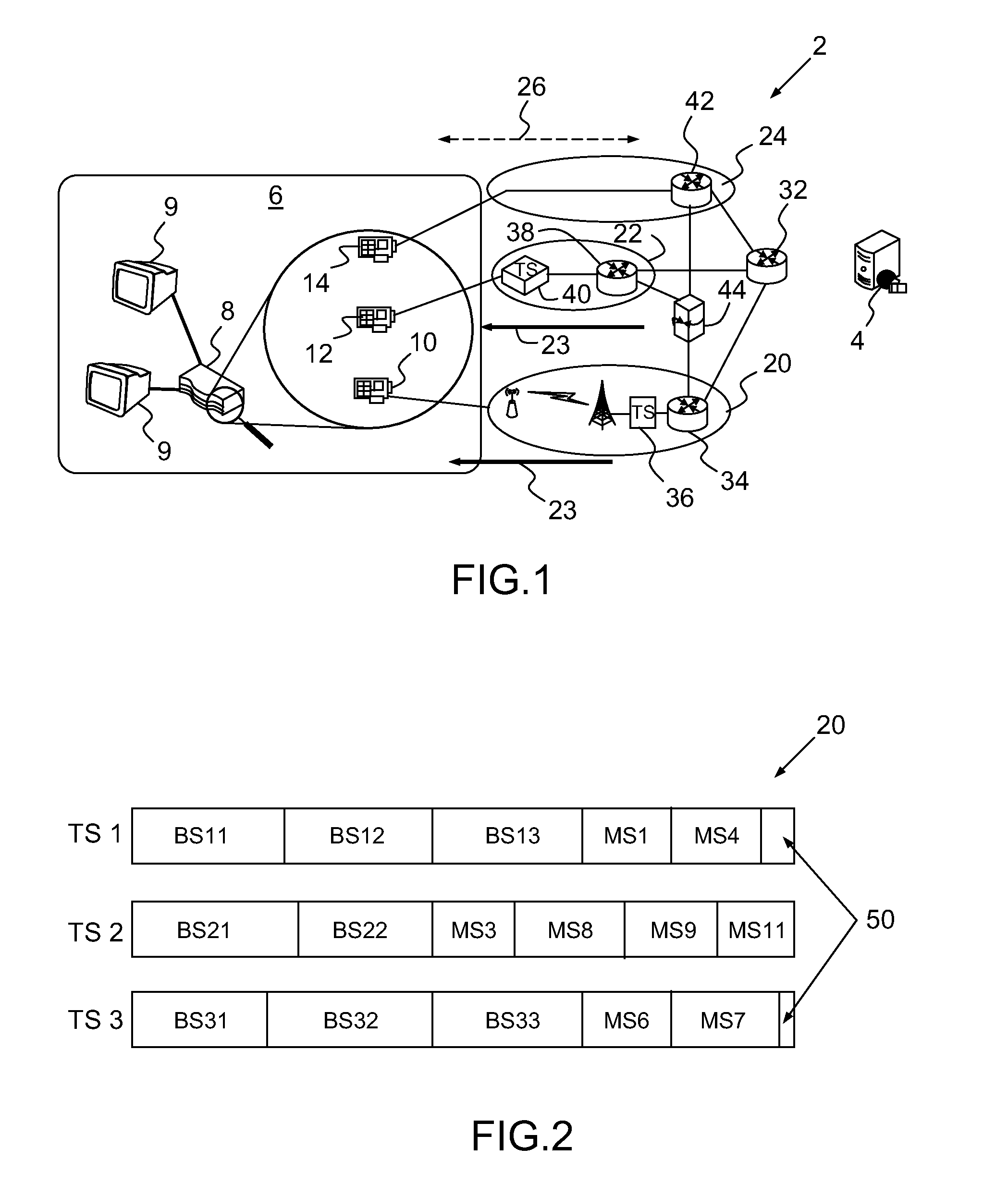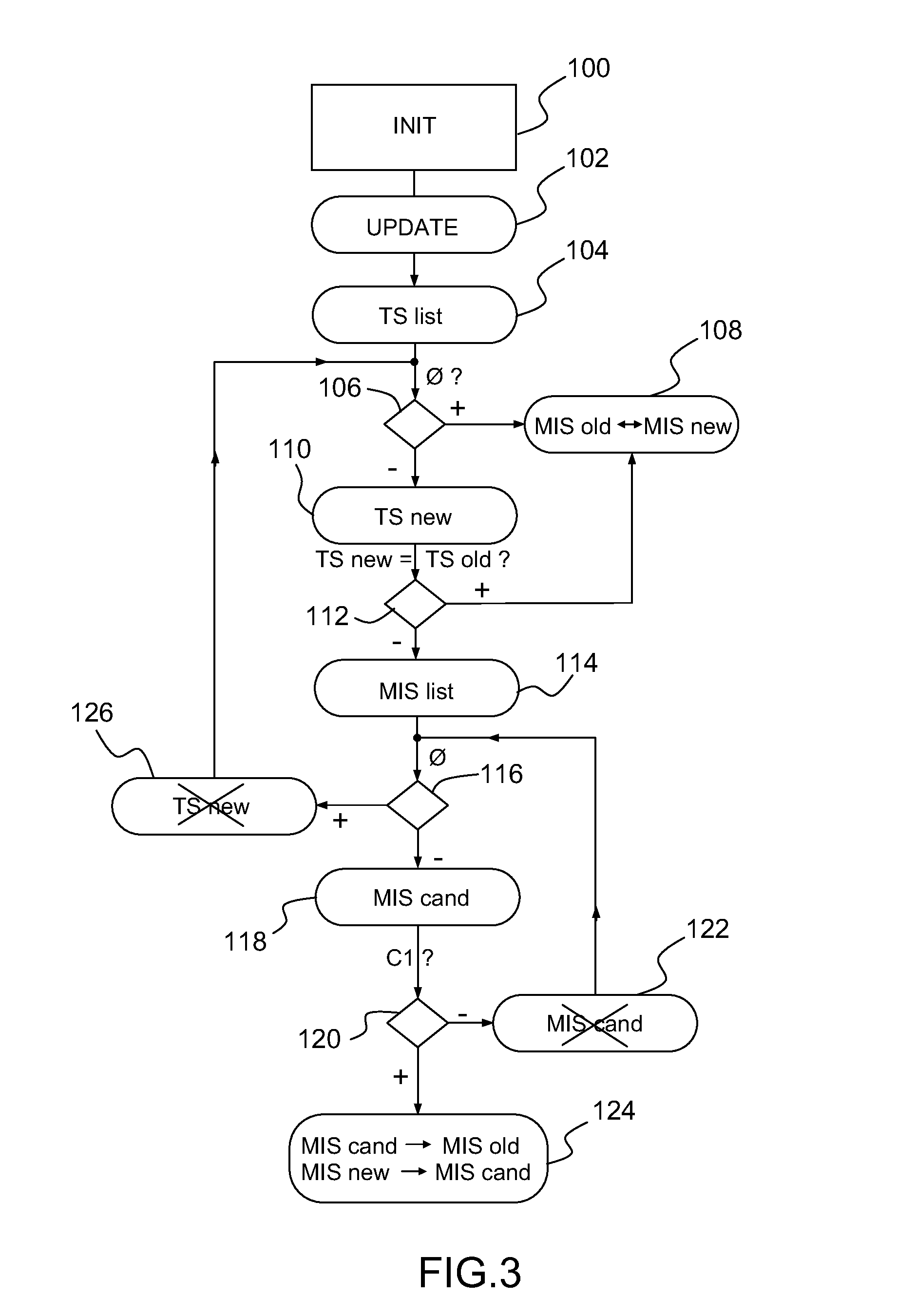Management of the transmission of data streams over multiple networks
- Summary
- Abstract
- Description
- Claims
- Application Information
AI Technical Summary
Benefits of technology
Problems solved by technology
Method used
Image
Examples
second embodiment
[0149]FIG. 4 is a flowchart showing the steps of the reorganization of the transport streams, when a request is emitted by the gateway 8 to receive an IP multicast stream available over the broadcast network 20.
[0150]At step 200, the multicast proxy 44 receives a request from the gateway 8 that this latter wants to receive an IP multicast stream MISreq available over the broadcast network 20 on a transport stream TSreq.
[0151]The multicast proxy 44 checks, at step 202, if the gateway 8 is already present in the gateways table.
[0152]If not, then the multicast proxy informs, at step 204, the gateway 8, for example by sending a message, and updates its two tables by adding references to the new gateway 8 and to the requested multicast stream MISreq. This situation means that the gateway's broadcast adapter 10 is not used to receive another IP multicast stream that could be delivered within another transport stream. Then, the multicast proxy returns in the initial state 200. An example ...
third embodiment
[0173]FIG. 5 is a flowchart showing the steps of the reorganization of the transport streams, when a request is emitted by the gateway 8 to receive an IP multicast stream available over the broadcast network 20 and there are no IP multicast streams present on the transport stream already received by the gateway, and different from the multicast streams already received, that could free enough bandwidth to deliver the requested IP multicast stream.
[0174]Steps 200 to 216 are identical to those of the second embodiment (FIG. 4). Their description is not repeated.
[0175]In this third embodiment, the list of candidate MIS is empty and the multicast proxy 44 checks if it can move the list of already received IP multicast streams from the already received transport stream TSarm to the requested transport stream TSreq. For this, it looks for a list of IP multicast streams, different from MISreq, that could free enough bandwidth to deliver the list of already received IP multicast streams to...
fourth embodiment
[0189]FIG. 6 is a flowchart showing the steps of the reorganization of the transport streams, when a request is emitted by the gateway 8 to receive an IP multicast stream available over the broadcast network 20 and there's no multicast stream present on the transport stream already received by the gateway, and different from the multicast streams already received, that could free enough bandwidth to deliver the requested IP multicast stream. Furthermore, in this embodiment, there's no combination of IP multicast streams of the requested transport stream that fulfils the condition C3.
[0190]Steps 200 to 232 are identical to those of the third embodiment (FIG. 5). Their description is not repeated.
[0191]In this fourth embodiment, the multicast proxy 44 checks if there is a transport stream, different from TSreq and TSarm, that can free enough bandwidth to host the requested IP multicast stream MISreq and the list of already received IP multicast streams, if the reorganization ensures ...
PUM
 Login to View More
Login to View More Abstract
Description
Claims
Application Information
 Login to View More
Login to View More - R&D
- Intellectual Property
- Life Sciences
- Materials
- Tech Scout
- Unparalleled Data Quality
- Higher Quality Content
- 60% Fewer Hallucinations
Browse by: Latest US Patents, China's latest patents, Technical Efficacy Thesaurus, Application Domain, Technology Topic, Popular Technical Reports.
© 2025 PatSnap. All rights reserved.Legal|Privacy policy|Modern Slavery Act Transparency Statement|Sitemap|About US| Contact US: help@patsnap.com



